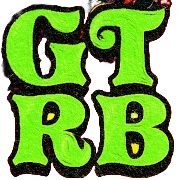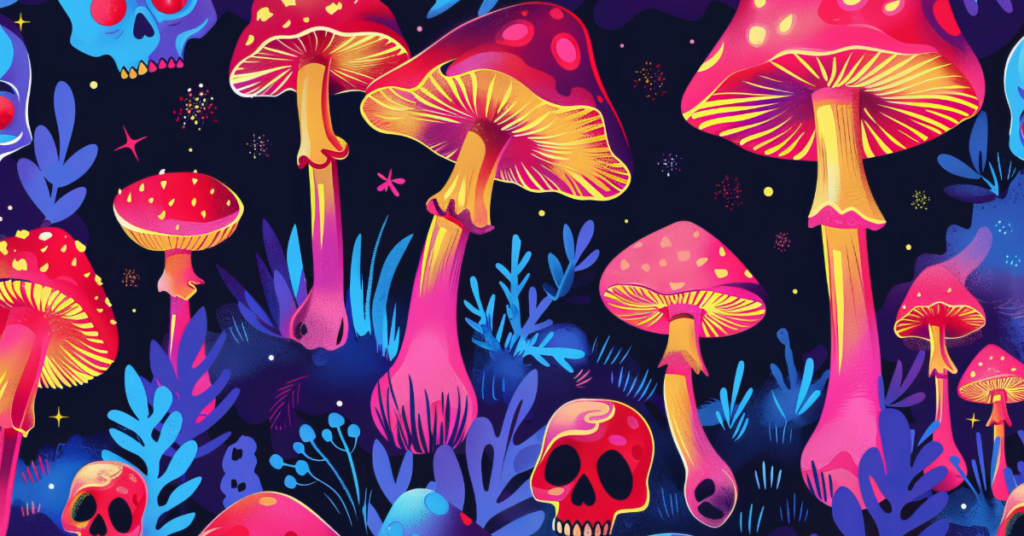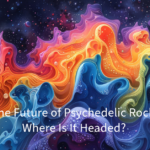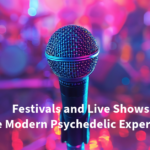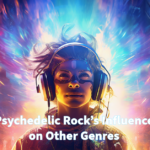Imagine walking into the Fillmore Auditorium in San Francisco in 1966. The room is alive with vibrant colors, swirling lights, and the unmistakable scent of incense. As the band begins to play, the music takes on a life of its own, enveloping you in a kaleidoscope of sound. This was the birth of something new, something that would soon captivate the world—psychedelic rock.
San Francisco and the Birth of the Scene
San Francisco in the mid-1960s became the epicenter of the psychedelic rock movement. The city’s Haight-Ashbury neighborhood was a melting pot of artists, musicians, and counterculture figures, all drawn together by a shared desire to explore new ways of thinking and living. It was in this vibrant, bohemian atmosphere that psychedelic rock truly began to flourish.
Venues like the Fillmore and the Avalon Ballroom became the proving grounds for bands that would go on to define the genre. The Grateful Dead, Jefferson Airplane, and Big Brother and the Holding Company, led by the powerhouse vocals of Janis Joplin, were just a few of the groups that emerged from this scene. Their music, characterized by long, improvisational jams and a blending of rock with folk, blues, and jazz, captured the spirit of the times.
Jefferson Airplane’s 1967 album Surrealistic Pillow is often regarded as one of the quintessential psychedelic rock albums. With tracks like “White Rabbit” and “Somebody to Love,” the band combined surreal, dream-like lyrics with a sound that was both electric and otherworldly. These songs became anthems for the counterculture movement, encapsulating the sense of adventure and rebellion that defined the era.
The British Invasion’s Psychedelic Turn
While San Francisco was the heart of the American psychedelic scene, the British Invasion bands were also exploring new musical territories. The Beatles, who had already begun experimenting with psychedelic sounds on Rubber Soul, took things to the next level with Revolver in 1966. Songs like “Tomorrow Never Knows” featured backward tape loops, Indian instruments, and lyrics inspired by the Tibetan Book of the Dead, pushing the boundaries of what rock music could be.
The Rolling Stones also dipped their toes into the psychedelic waters with their 1967 album Their Satanic Majesties Request. Though less successful critically than their previous works, the album’s tracks like “She’s a Rainbow” and “2000 Light Years from Home” showcased the band’s willingness to experiment with new sounds and themes.
Pink Floyd, led by the enigmatic Syd Barrett, emerged as one of the most innovative bands of the era. Their debut album, The Piper at the Gates of Dawn (1967), was a wild, whimsical journey through the mind of Barrett, with tracks like “Interstellar Overdrive” exemplifying the spacey, improvisational style that would become a hallmark of psychedelic rock.
Defining Albums and Songs
The period from 1965 to 1967 saw the release of some of the most iconic psychedelic albums and songs in rock history. The Beatles’ Sgt. Pepper’s Lonely Hearts Club Band (1967) was a groundbreaking work that not only pushed the boundaries of studio production but also solidified the connection between rock music and the burgeoning counterculture.
The Doors, led by the charismatic Jim Morrison, burst onto the scene with their self-titled debut album in 1967. Songs like “Break On Through (To the Other Side)” and “Light My Fire” combined bluesy, organ-driven rock with dark, poetic lyrics, creating a sound that was both accessible and deeply unsettling.
Jimi Hendrix, arguably the most influential guitarist of all time, released his debut album Are You Experienced in 1967. With tracks like “Purple Haze” and “Foxy Lady,” Hendrix brought a level of technical skill and raw power to psychedelic rock that had never been seen before. His use of feedback, distortion, and wah-wah pedals revolutionized the electric guitar, making it the perfect instrument for the psychedelic sound.
The Role of Psychedelic Drugs
Psychedelic rock and psychedelic drugs like LSD were inextricably linked. The mind-expanding experiences provided by these substances influenced both the music and the culture of the time. Artists sought to capture the surreal, often transcendental experiences of an acid trip in their music, leading to the creation of songs that were as much about altering the listener’s consciousness as they were about entertainment.
LSD advocate Timothy Leary famously encouraged people to “Turn on, tune in, drop out,” a phrase that became synonymous with the counterculture movement. Musicians took this message to heart, with many using LSD as a tool for creativity and self-discovery. The music that emerged from these experiences was unlike anything that had come before—dreamlike, experimental, and at times, downright bizarre.
The Height of the Psychedelic Era
By 1967, psychedelic rock had moved from the underground clubs of San Francisco to the forefront of popular music. The genre had produced some of the most innovative and influential albums of all time, capturing the spirit of an era defined by exploration, rebellion, and a desire to break free from the constraints of the past.
As we move into the next part of this series, we’ll explore how psychedelic rock reached its peak during the late 1960s, with legendary festivals, iconic performances, and the creation of timeless music that continues to inspire new generations. The ride is just beginning—stay tuned for the peak of psychedelia.
